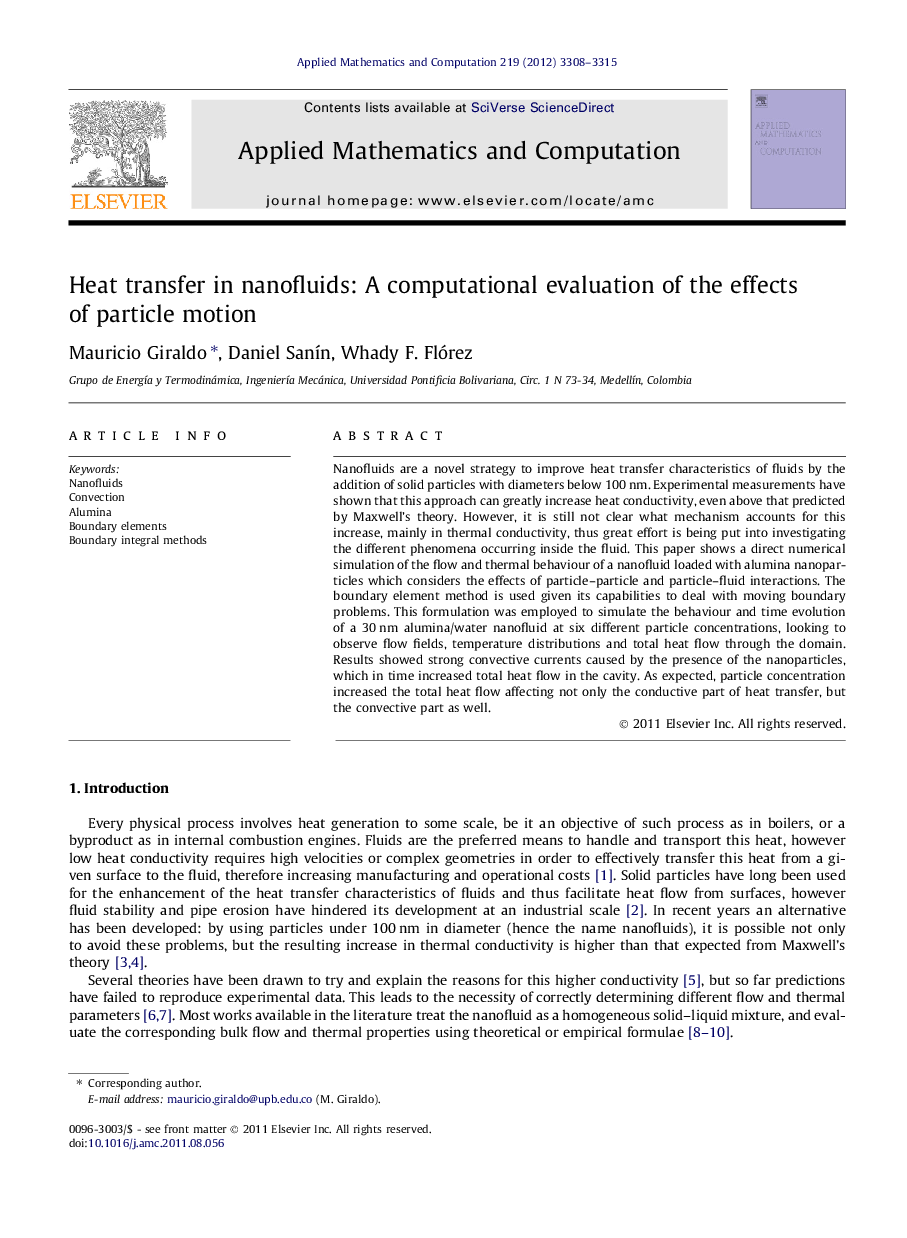| Article ID | Journal | Published Year | Pages | File Type |
|---|---|---|---|---|
| 4629308 | Applied Mathematics and Computation | 2012 | 8 Pages |
Nanofluids are a novel strategy to improve heat transfer characteristics of fluids by the addition of solid particles with diameters below 100 nm. Experimental measurements have shown that this approach can greatly increase heat conductivity, even above that predicted by Maxwell’s theory. However, it is still not clear what mechanism accounts for this increase, mainly in thermal conductivity, thus great effort is being put into investigating the different phenomena occurring inside the fluid. This paper shows a direct numerical simulation of the flow and thermal behaviour of a nanofluid loaded with alumina nanoparticles which considers the effects of particle–particle and particle–fluid interactions. The boundary element method is used given its capabilities to deal with moving boundary problems. This formulation was employed to simulate the behaviour and time evolution of a 30 nm alumina/water nanofluid at six different particle concentrations, looking to observe flow fields, temperature distributions and total heat flow through the domain. Results showed strong convective currents caused by the presence of the nanoparticles, which in time increased total heat flow in the cavity. As expected, particle concentration increased the total heat flow affecting not only the conductive part of heat transfer, but the convective part as well.
